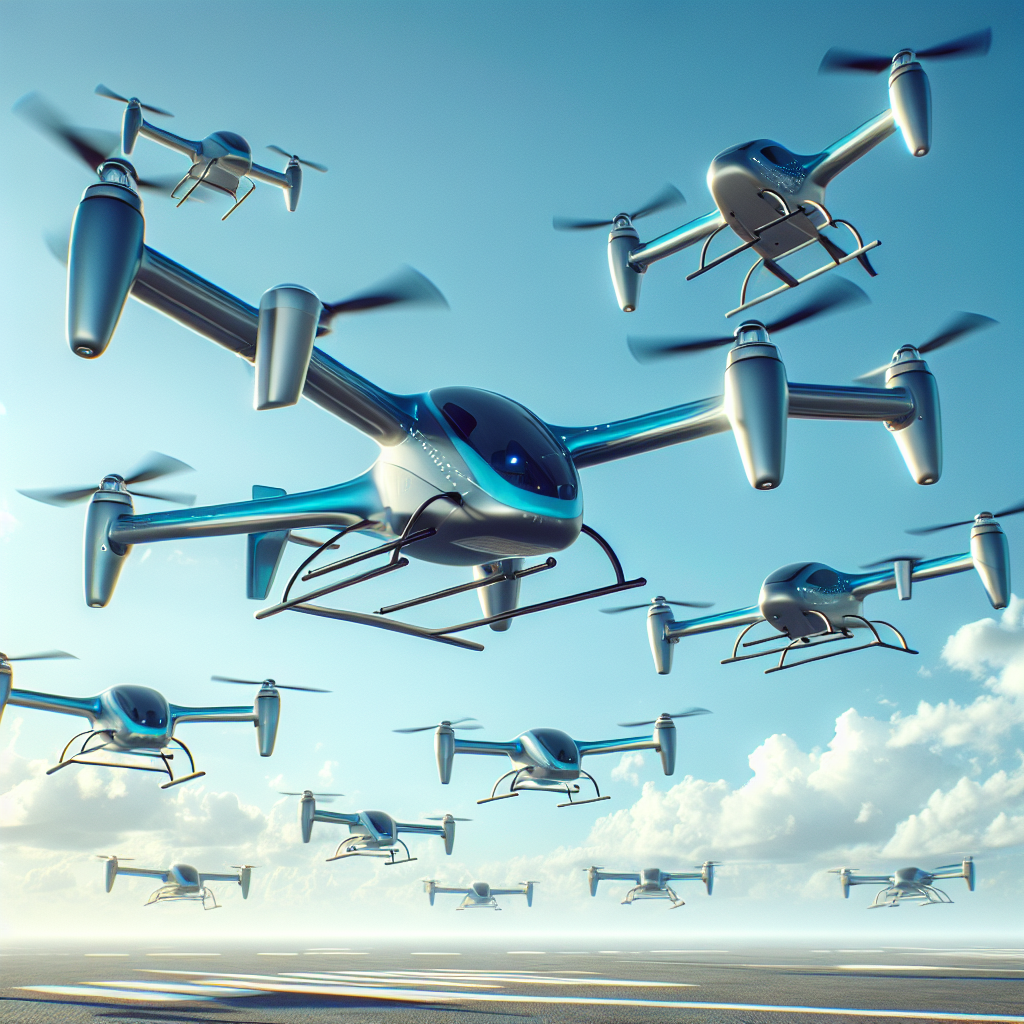Vertical Aerospace Faces Financial Turmoil Amid Flying Taxi Innovations

Introduction to Vertical Aerospace's Ambitions
In the fast-evolving aerospace industry, numerous startups are working diligently to bring flying taxis from science fiction into reality. One notable contender in this race is the British company Vertical Aerospace. Their latest innovation, the VX4 prototype, is a captivating blend of a plane and a helicopter, designed to revolutionize urban transportation. However, recent events have placed the company at a crossroads, as it navigates financial challenges and technical hurdles.
The VX4 Prototype: A Leap in Flying Taxi Technology
The VX4 represents a significant milestone for Vertical Aerospace, showcasing their commitment to innovation in the flying taxi sector. On a chilly November day, the VX4 demonstrated its potential by lifting off the runway in the Cotswolds, proving its capability to carry a passenger. Vertical Aerospace's vision extends beyond this demonstration; they aim to bring this eVTOL (electric Vertical Takeoff and Landing) aircraft to urban skies, providing a quick and eco-friendly commuting solution.
Financial Strains and Investor Dependencies
Despite the successful test flight, Vertical Aerospace is currently grappling with severe financial pressures. The company has been heavily reliant on investments, including substantial support from UK taxpayers. Amid ongoing negotiations with investors, there is concern that the company's founder, Stephen Fitzpatrick, might lose control to a US hedge fund. The outcome of these discussions is critical to ensuring Vertical Aerospace can continue its work in developing and commercializing flying taxis.
Regulatory Challenges and Setbacks
In addition to financial hurdles, Vertical Aerospace is encountering considerable regulatory challenges. Earlier promises of seeing their aircraft ferry passengers by 2025 have been postponed to 2028. This delay is largely due to cautious regulatory bodies and challenges within their supply chain. These factors highlight the complexities involved in bringing eVTOL aircraft from development stages to commercial viability, emphasizing the need for patience and perseverance in the industry.
Risks and Incidents: Learning from Experience
Vertical Aerospace's journey has not been without setbacks. An incident in August highlighted the potential risks associated with eVTOL technology when an unmanned test flight ended in a crash. While no injuries were reported, the mishap underscored the critical importance of safety and reliability in the development of flying taxis. Such events provide valuable learning experiences that guide future improvements and safety assurances.
Market Competition and Industry Landscape
The flying taxi industry is a crowded field with numerous startups and established aerospace giants vying for dominance. Companies such as the US-based Joby Aviation and Germany's Volocopter have made significant strides, each seeking to become the 'Tesla of the skies'. They, along with traditional aircraft manufacturers like Boeing and Airbus, are driving substantial advancements and investment into this burgeoning sector. Vertical Aerospace must navigate this competitive landscape while striving to differentiate their offerings and secure market share.
Conclusion: The Road Ahead for Vertical Aerospace
Vertical Aerospace's journey in the flying taxi industry is at a pivotal moment. Balancing financial sustainability with technological innovation and overcoming regulatory hurdles will be crucial for the company's success. As they continue to develop the VX4 and potentially other vehicles, the challenge remains: making flying taxis a safe, reliable, and practical option for urban transport. Despite the hurdles, the potential benefits of revolutionizing urban travel keep the flying taxi dream alive, attracting both attention and investment worldwide.




